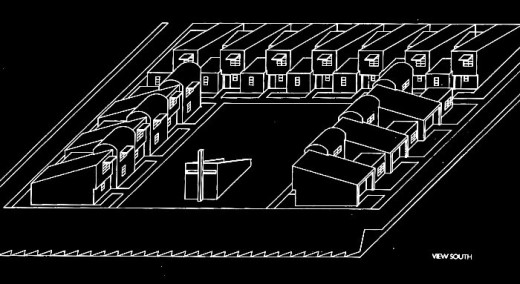Read an excerpt from this article below. You can download the full article by using the link at the end of the excerpt.
Despite the challenges to the housing market presented by profound social and economic change, there are surprisingly few alternatives to the single family house, especially in single-family residential neighborhoods. Most so-called “multi-family housing” responds to purely quantitative criteria, packing the largest possible number of units on a given piece of land. When children are forced to play on walkways, in stairwells, in parking lots, or on leftover spaces scattered randomly about the site, the result is a living environment that doesn’t work well for anyone.
Multi-family housing can create successful small neighborhoods within the community, if carefully designed. As architects, we’ve tried to employ built forms that foster residential privacy, as well as a strong sense of personal and family identity, while fitting in with the surrounding neighborhood.
Sunrise Place and Daybreak Grove are two housing developments we designed for low-income families in Escondido, California. Escondido is a rapidly urbanizing agricultural community, with a large Latino immigrant population, northeast of San Diego.

The eight- and thirteen-unit projects were commissioned by the North County Housing Foundation, a community-based non-profit developer, and financed with a combination of loans and grants from the public and private sectors. Although Sunrise Place and Daybreak Grove have been designed for low-income families, they have much to offer as models of good housing and efficient use of urban land for any group. …
End of excerpt